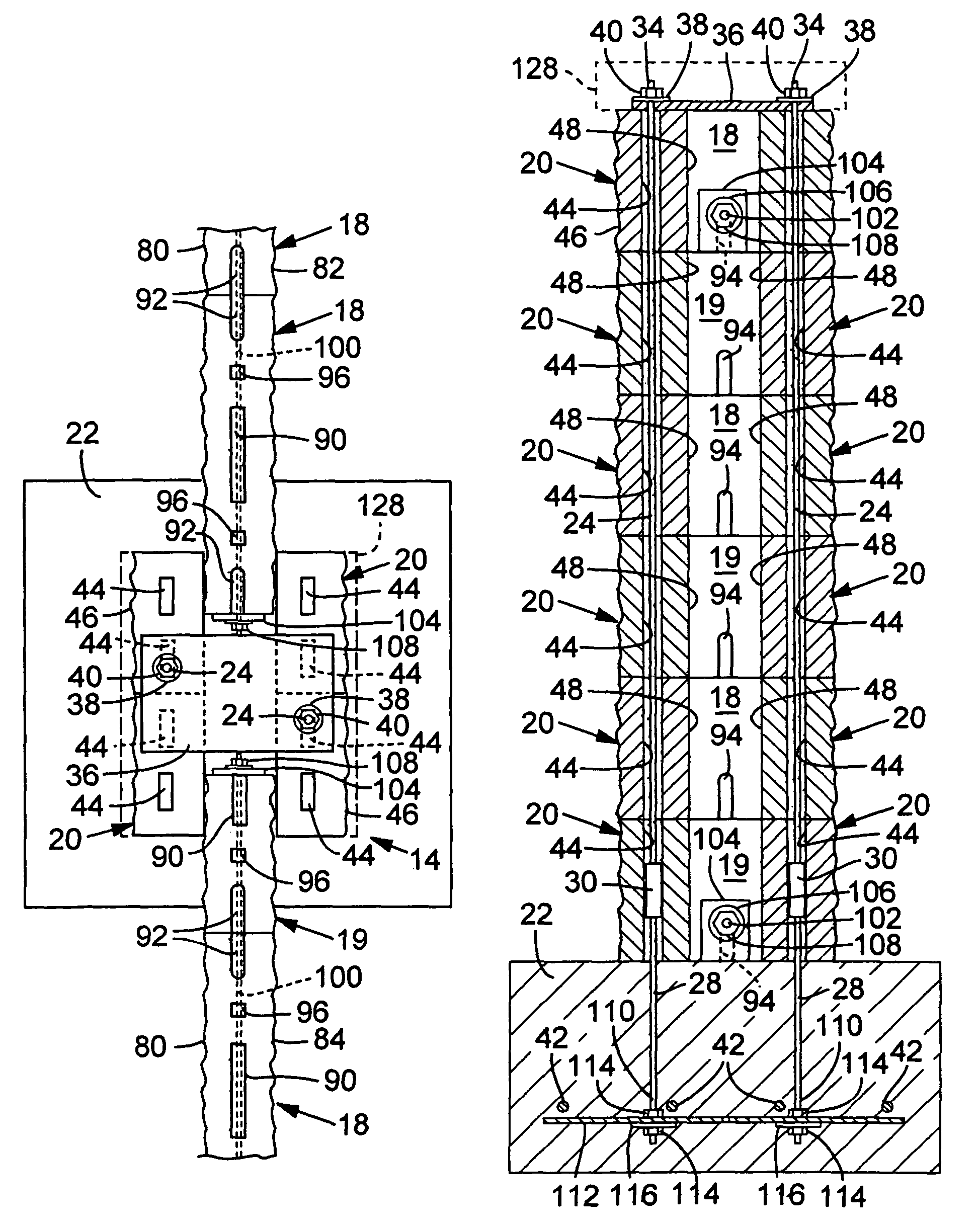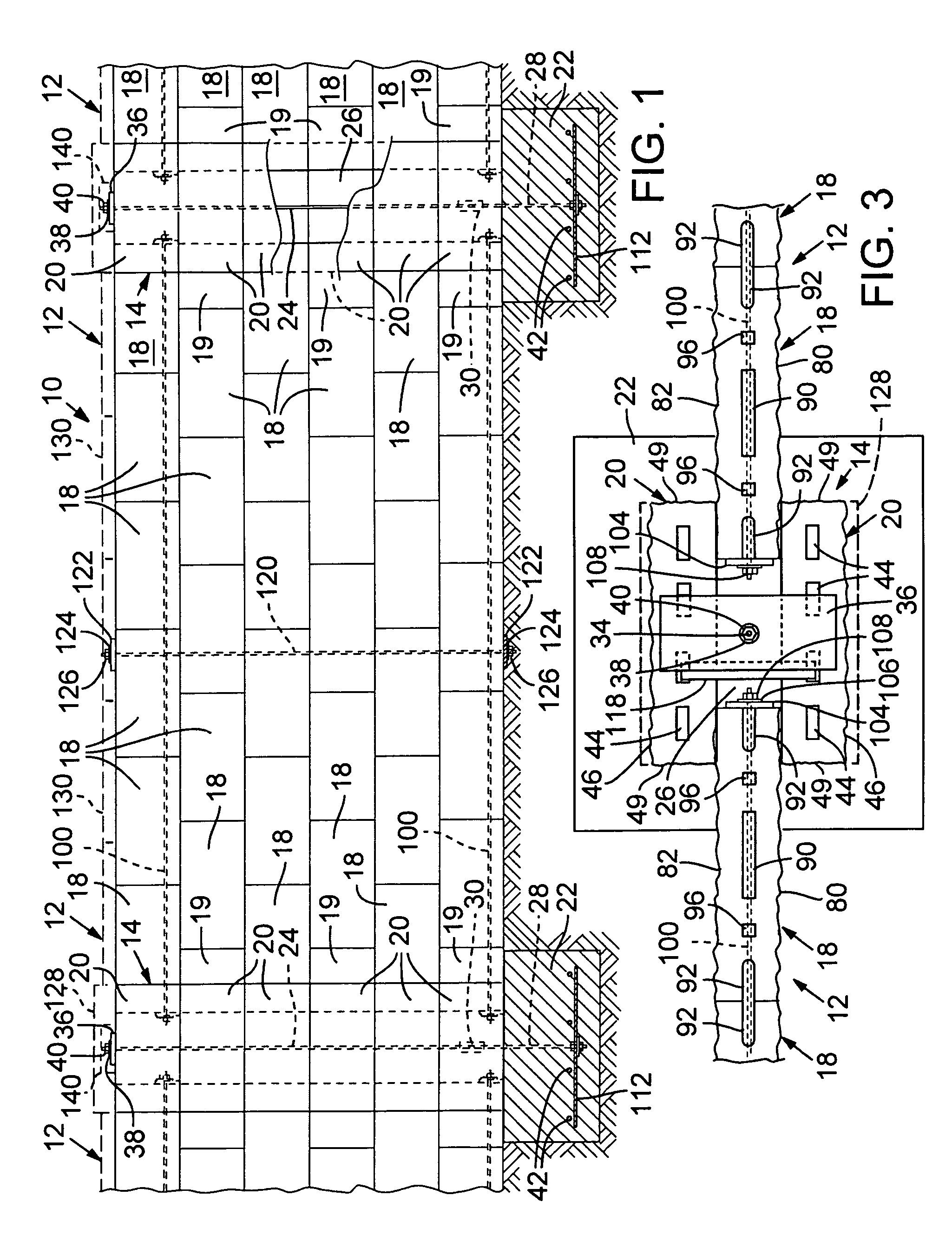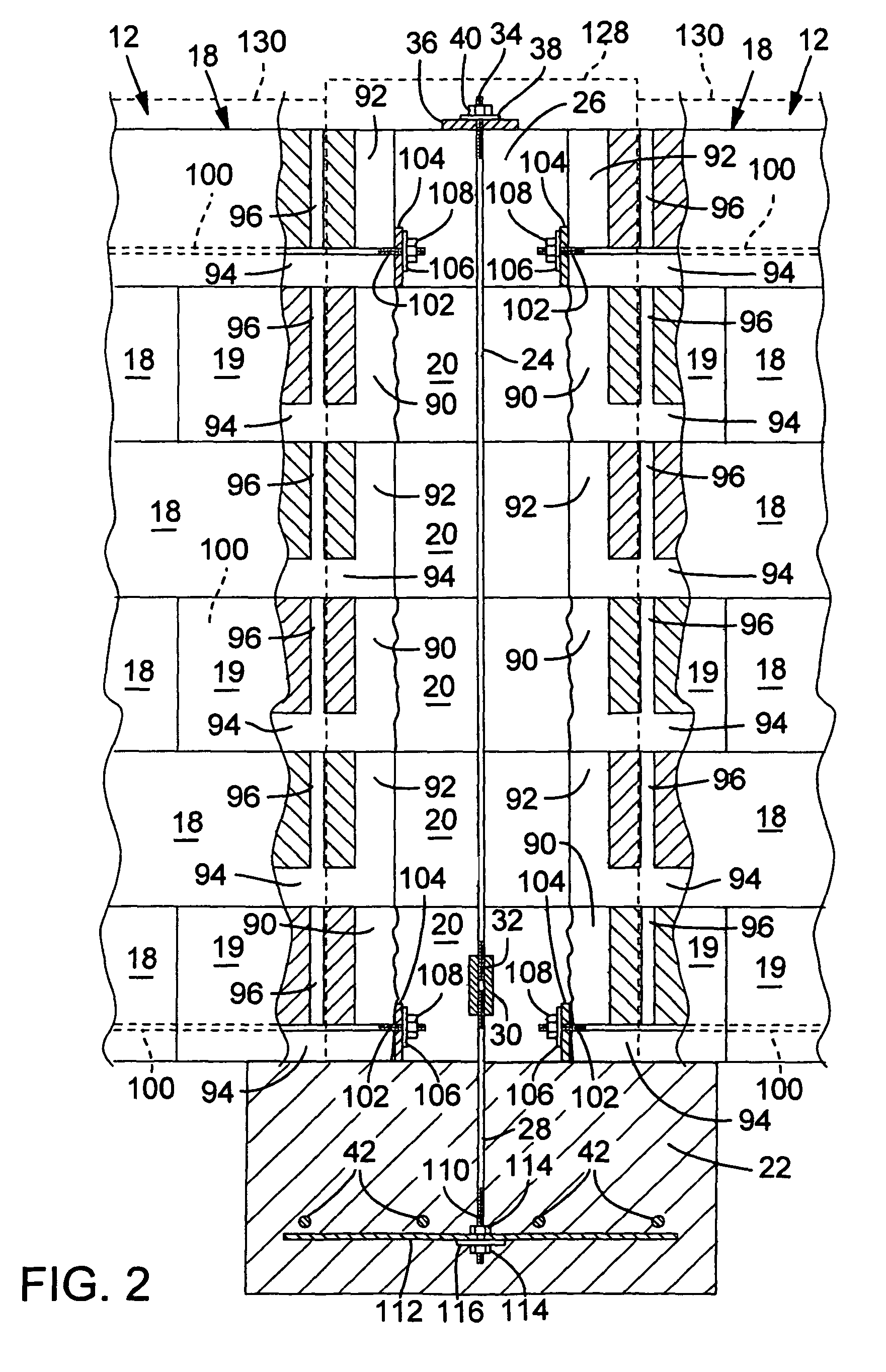Masonry block wall system
- Summary
- Abstract
- Description
- Claims
- Application Information
AI Technical Summary
Benefits of technology
Problems solved by technology
Method used
Image
Examples
Embodiment Construction
[0048]As used herein, the singular forms “a,”“an,” and “the” refer to one or more than one, unless the context clearly dictates otherwise.
[0049]As used herein, the term “includes” means “comprises.” For example, a device that includes or comprises A and B contains A and B but may optionally contain C or other components other than A and B. A device that includes or comprises A or B may contain A or B or A and B, and optionally one or more other components such as C.
[0050]Referring first to FIGS. 1 and 2, there is shown a free-standing wall structure 10 (e.g., a fence), according to one embodiment, comprising one or more panels 12 supported between pilasters. The pilasters can be a field pilaster 14 positioned at the ends of two adjacent panels 12 positioned end-to-end in a 180-degree relationship with respect to each other in one side of the wall structure (as shown in FIG. 1), a corner pilaster 16 (FIG. 14) positioned at a 90-corner of the wall structure, or a pilaster 78 (FIG. 15)...
PUM
 Login to View More
Login to View More Abstract
Description
Claims
Application Information
 Login to View More
Login to View More - R&D
- Intellectual Property
- Life Sciences
- Materials
- Tech Scout
- Unparalleled Data Quality
- Higher Quality Content
- 60% Fewer Hallucinations
Browse by: Latest US Patents, China's latest patents, Technical Efficacy Thesaurus, Application Domain, Technology Topic, Popular Technical Reports.
© 2025 PatSnap. All rights reserved.Legal|Privacy policy|Modern Slavery Act Transparency Statement|Sitemap|About US| Contact US: help@patsnap.com



